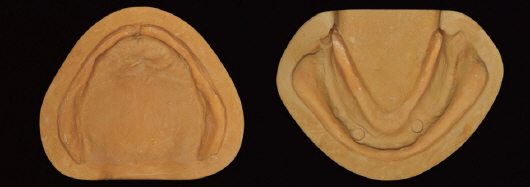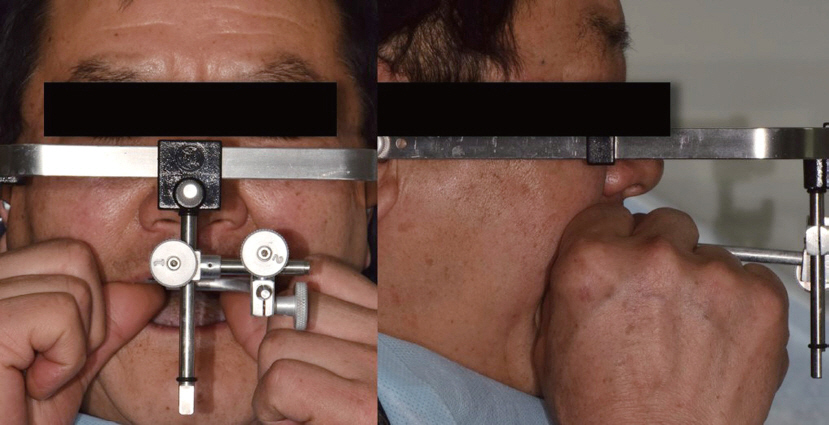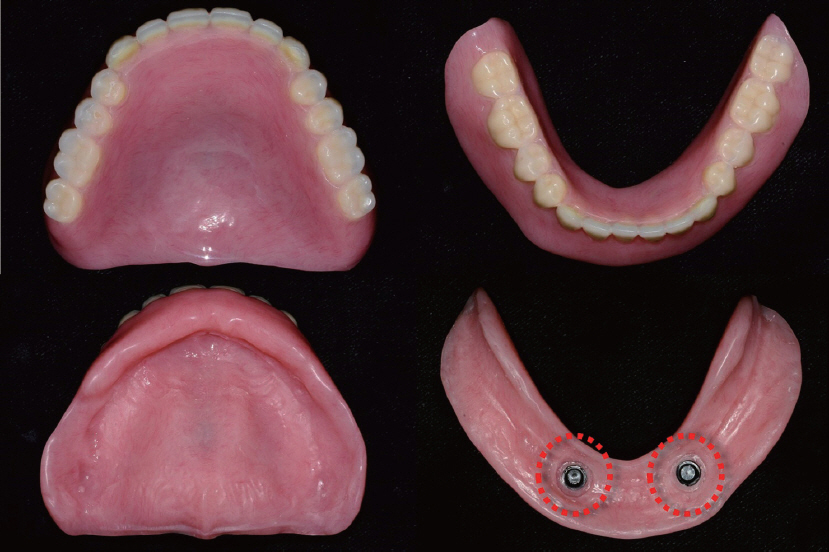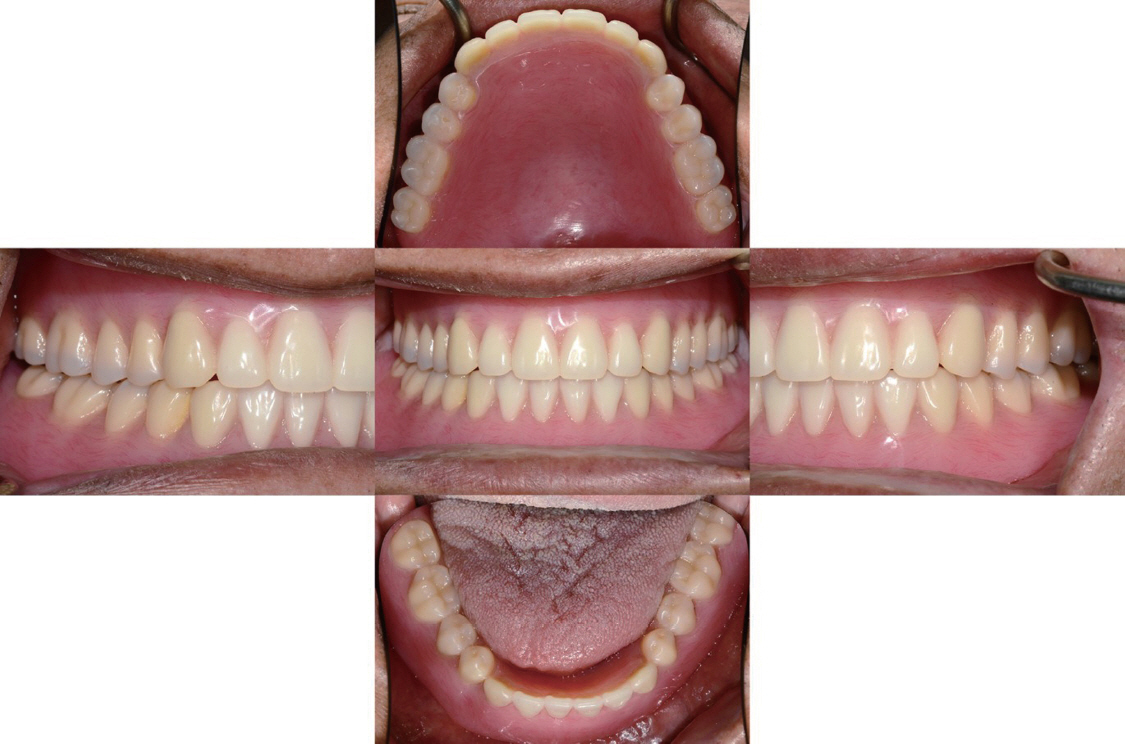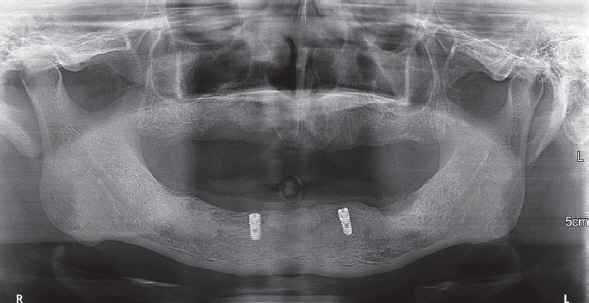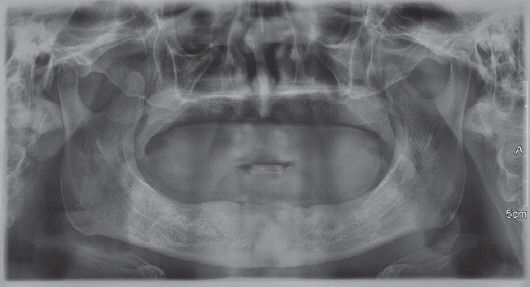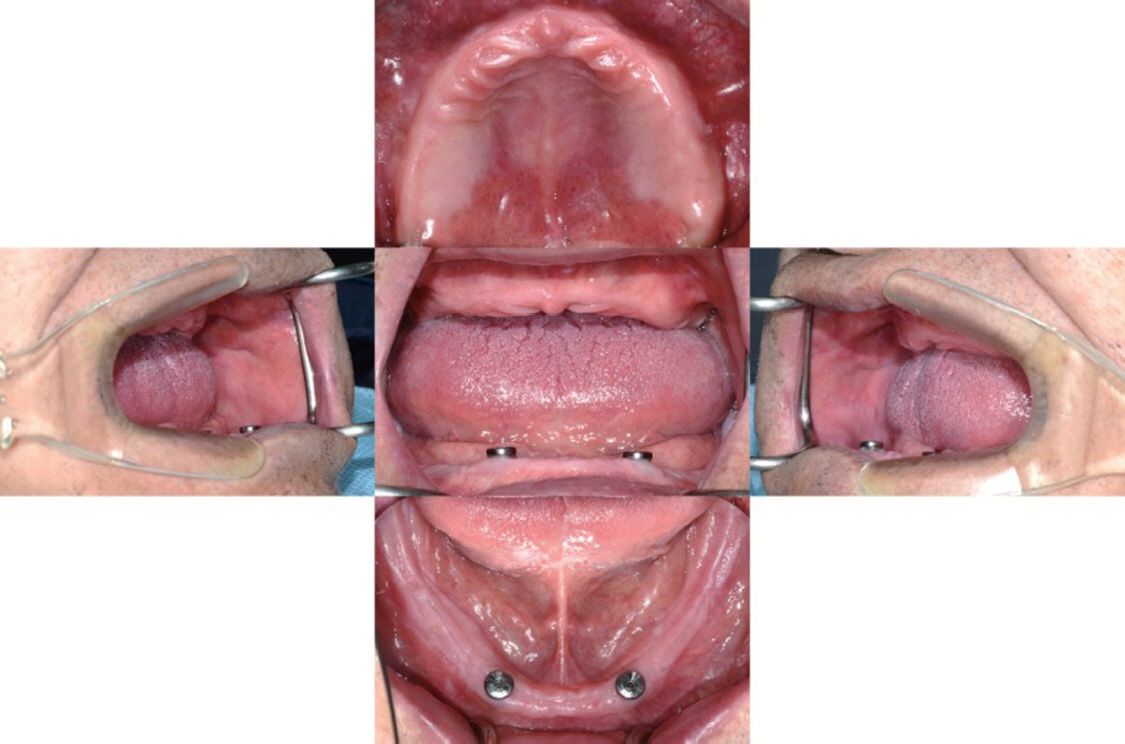J Dent Rehabil Appl Sci.
2015 Sep;31(3):242-252. 10.14368/jdras.2015.31.3.242.
Implant overdenture treatment using several solitary attachment systems on mandibular edentulous patients
- Affiliations
-
- 1Department of Prosthodontics, College of Dentistry, Dankook University, Cheonan, Republic of Korea. syshin@dankook.ac.kr
- KMID: 2180025
- DOI: http://doi.org/10.14368/jdras.2015.31.3.242
Abstract
- Implant overdenture treatment using several solitary attachment systems on mandibular edentulous patients. Most patients with severe residual ridge resorption report significantly more problems adapting to their mandibular denture due to a lack of comfort, retention, stability and to the inability to chew and eat. Recent scientific studies carried out over the past decade have determined that the benefits of a mandibular implant overdenture are sufficient to get retention and stability. Therefore, overdenture with implants on the mandible and attachments are considered as a treatment of choice as a favorable treatment. In this cases, with consideration for jaw relation, level of bone loss, facial support and economic factor, edentulous patients with severe residual ridge resorption are rehabilitated by complete denture on maxilla and two-implants overdenture using several solitary attachment systems on mandible.
Keyword
Figure
Reference
-
References
1. Feine JS, Carlsson GE, Awad MA, Chehade A, Duncan WJ, Gizani S, Head T, Lund JP, MacEntee M, Mericske-Stern R, Mojon P, Morais J, Naert I, Payne AG, Penrod J, Stoker GT Jr, Tawse-Smith A, Taylor TD, Thomason JM, Thomson WM, Wismeijer D. The McGilll consensus statement on overdentures. Montreal, Quebec, Canada. May 24-25 2002. Int J Prosthodont. 2002; 15:413–4. PMID: 12170858.2. Rissin L, House JE, Manly RS, Kapur KK. Clinical comparison of masticatory performance and electromyographic activity of patients with complete dentures, overdentures and natural teeth. J Prosthet Dent. 1978; 39:508–11. DOI: 10.1016/S0022-3913(78)80181-4.3. Kapur KK, Soman SD. Masticatory performance and efficiency in denture wearers. J Prosthet Dent. 1964; 4:687–94. DOI: 10.1016/0022-3913(64)90203-3.4. van Steenberghe D, Quirynen M, Callberson L, Demanet M. A prospective evaluation of the fate of 697 consecutive intraoral fixtures ad modum Brånemark in the rehabilitation of edentulism. J Head Neck Pathol. 1987; 6:53–8.5. Närhi TO, Geertman ME, Hevinga M, Abdo H, Kalk W. Changes in the edentulous maxilla in persons wearing implant-retained mandibular overdentures. J Prosthet Dent. 2000; 84:43–9. DOI: 10.1067/mpr.2000.107113. PMID: 10898841.6. Kapur KK, Garrett NR, Hamada MO, Roumanas ED, Freymiller E, Han T, Diener RM, Levin S, Wong WK. Randomized clinical trial comparing the efficacy of mandibular implant supported overdentures and conventional dentures in diabetic patients. Part III: comparisons of patient satisfaction. J Prosthet Dent. 1999; 82:416–27. DOI: 10.1016/S0022-3913(99)70028-4.7. Geertman ME, Van Waas MA, van’t Hof MA, Kalk W. Denture satisfaction in a comparative study of implant-retained mandibular overdenture: a ramdomized clinical trial. Int J Oral Maxillofac Implant. 1996; 11:194–200. DOI: 10.1097/00008505-199600540-00029.8. Gotfredsen K, Holm B. Implant-supported mandibular overdentures retained with ball or bar attachments: a randomized prospective 5-year study. Int J Prosthodont. 2000; 13:125–30. PMID: 11203620.9. Bakke M, Holm B, Gotfredsen K. Masticatory function and patient satisfaction with implant supported mandibular overdentures: a prospective 5-year study. Int J Prosthdont. 2002; 15:575–81. PMID: 12475165.10. Thiel CP, Evans DB, Burnett RR. Combination syndrome associated with a mandibular implantsupported overdenture: a clinical report. J Prosthet Dent. 1996; 75:107–13. DOI: 10.1016/S0022-3913(96)90084-0.11. Maxson BB, Powers MP, Scott RF. Prosthodontic considerations for the transmandibular implant. J Prosthet Dent. 1990; 63:554–8. DOI: 10.1016/0022-3913(90)90075-N.12. Barber HD, Scott RF, Maxon BB, Fonseca RJ. Evaluation of anterior maxillary alveolar ridge resorption when opposed by the transmandibular implant. J Oral Maxillofac Surg. 1990; 48:1283–7. DOI: 10.1016/0278-2391(90)90483-I.13. Schneider AL, Kurtzman GM. Bar overdentures utilizing the Locator attachment. Gen Dent. 2001; 49:210–4. PMID: 12004703.14. Heckmann SM, Winter W, Meyer M, Weber HP, Wichmann MG. Overdenture attachment selection and the loading of implant and denture-bearing area. Part 2: a methodical study using five types of attachment. Clin Oral Implants Res. 2001; 12:640–7. DOI: 10.1034/j.1600-0501.2001.120613.x. PMID: 11737109.15. Sadowsky SJ. Mandibular implant-retained overdentures: a literature review. J Prosthet Dent. 2001; 86:468–73. DOI: 10.1067/mpr.2001.119921. PMID: 11725274.16. Carlsson GE, Lindquist LW, Jemi T. Long-term marginal periimplant bone loss in edentulous patients. Int J Prosthodont. 2000; 13:295–302. PMID: 11203645.17. Nissan J, Oz-Ari B, Gross O, Ghelfan O, Chaushu G. Long-term prosthetic aftercare of direct vs. indirect attachment incorporation techniques to mandibular implant-supported overdenture. Clin Oral Implants Res. 2011; 22:627–30. DOI: 10.1111/j.1600-0501.2010.02026.x. PMID: 21070382.18. Bilhan H, Geckili O, Mumcu E, Bilmenoglu C. Maintenance requirement associated with mandibular implant overdentures: clinical results after first year of service. J Oral Implantol. 2011; 37:697–704. DOI: 10.1563/AAID-JOI-D-10-00096. PMID: 20932124.
- Full Text Links
- Actions
-
Cited
- CITED
-
- Close
- Share
- Similar articles
-
- Mandibular implant overdenture using Locator R-Tx attachment: A case report
- Implant-retained overdenture with CM LOC ® Pekkton® in maxillary edentulous patient
- The Implant Retained Overdenture by Locator Attachments on the Edentulous Mandible: A Case Report
- Mandibular implant overdenture using milled bar attachment on implants with unfavorable fixture angulation: A case report
- Open and Closed Mouth Impression Techniques for Mandibular Implant Overdenture: Two Cases Report


